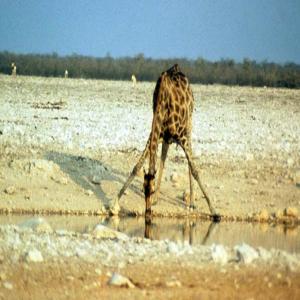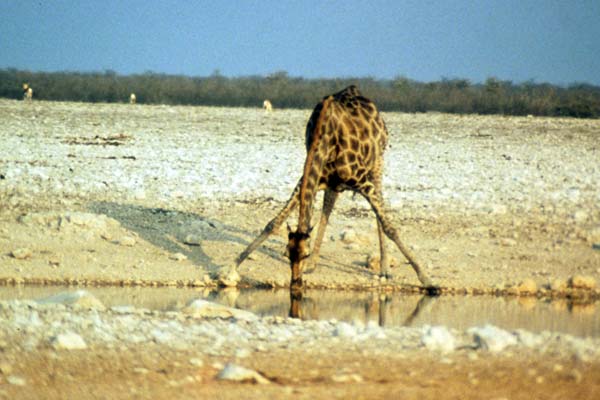Episodes

Monday Apr 25, 2011
The WildLife: Lead Toxicity in Patagonia's Waterfowl, Marcela Uhart
Monday Apr 25, 2011
Monday Apr 25, 2011
Marcela Uhart, Wildlife Conservation Society’s field veterinarian in Patagonia, Argentina, talks about the impact of lead ammunition on wildlife. She reveals to “The WildLife” host Laurel Neme how spent ammunition remains in the environment where it can then be ingested by animals, especially waterfowl. Because they have no teeth, these birds swallow stones and seeds whole to help grind the food in their stomachs.
Argentina is known for its waterfowl hunting, and every year the number of birds killed is huge. However, switching from lead shot is a slow process because hunters have to accept the new ammunition and lead-free alternatives have to be available. In the United States, lead shot to hunt waterfowl in wetlands has been banned since 1991. This regulation came about mostly because bald eagles that preyed on the waterfowl were being poisoned. In addition, there are some more localized bans. For instance, California has banned the use of lead ammunition in the range of the endangered California Condor and Arizona has a voluntary ban. Also, early in 2010, the National Park Service announced a plan to ban lead ammunition and fishing tackle in the parks. Currently, twenty-nine other countries have adopted voluntary or legislative restrictions, with some of the most aggressive regulations having been adopted in Europe.
Dr. Uhart is trying to get similar restrictions in Argentina by studying the impact of lead pellets on waterfowl in Patagonia. Her research on recently-killed ducks has found lead in their blood, which indicates recent exposure, and their bones, which shows lead accumulation over time. Because she is sampling ducks who were healthy enough to fly and be shot, her research probably underestimates the full effects of lead toxicity. Consequently, her next step will be to assess sub-lethal impacts, such as changes in bone density.
Born and raised on a ranch in the Argentine pampas, Marcela Uhart has been a veterinarian with the Wildlife Conservation Society's (WCS) Field Veterinary Program since 1996. She spends much of her time in the field and often collaborates with numerous non-governmental organizations and researchers in Argentina while providing veterinary expertise in wildlife handling and immobilizations, translocations and health monitoring of wildlife populations. She has worked on a variety of species, including sea lions, elephant seals, penguins, small carnivores, caiman and raptors, as well as "agricultural-conflictive" species such as rheas, large rodents and large ungulates, including guanaco and pampas deer. Marcela has helped to introduce new policy measures to benefit wildlife, such as the establishment of a program to control agricultural pesticide use, implemented with the support and endorsement of an Argentine government research agency known as INTA. Marcela also acts as a consultant to field researchers and local conservation groups and has traveled to Bolivia, Chile, Ecuador and other Latin American countries to provide her services. In November 1998, she became one of the founding members of the first Association of Latin American Wildlife Veterinarians. She is also the IUCN’s Wildlife Health Specialist Group (WHSG) coordinator for South America. In this role she hopes to reinforce and revitalize the relationship between wildlife specialists from the developed and developing nations. In fact, since she started at WCS, Marcela has worked tirelessly to address the critical shortage of training opportunities for young veterinarians in Latin America. Professional outreach remains a major focus of her work, as does collaborating with local universities and leading workshops in several Latin American countries. This episode of “The WildLife” aired on The Radiator, WOMM-LP, 105.9 FM in Burlington, Vermont on April 25, 2010.

Monday Aug 09, 2010
The WildLife: Smithsonian's Feather Identification Lab, Marcy Heacker
Monday Aug 09, 2010
Monday Aug 09, 2010
Marcy Heacker, a wildlife forensic scientist at the Smithsonian Institution’s Feather Identification Lab in Washington, DC, discusses wildlife forensics, bird strikes and feather identification. She tells “The WildLife” host Laurel Neme how her analysis helps airports manage wildlife to enhance airline safety and also talks about how she and the other forensic scientists at the lab helped analyze the crash of US Airways flight 1549, the Miracle on the Hudson. While typically the result is not as catastrophic, birds and other wildlife strikes to aircraft annually cause over $600 million in damage to U.S. civil and military aviation each year. The Smithsonian’s Feather Identification Lab identify the species involved and thus help airport biologists manage the habitats in such a way so as to discourage wildlife from congregating in the area. While the methods vary depending on each unique situation, it works. For example, New York’s JFK International Airport reduced gull strikes by roughly 80 percent using tactics such as grass management, eliminating standing water, and frightening birds with pyrotechnics. All that is possible once you know the species you’re dealing with, and Marcy is a part of that. Marcy Heacker is a research assistant with the Smithsonian Institution’s Feather Identification Lab in Washington, DC. She received her Master’s of Science and Bachelor’s of Science in Biology from George Mason University in Fairfax, Virginia. She also holds an Associates Degree in Veterinary Technology from Columbus State College in Columbus, Ohio. The main focus of Marcy's work is in avian species identification from microscopic and whole-feather characters. This specialized work in wildlife forensics is particularly important for aviation industry personnel that deal with civil and military bird strikes. This feather identification service has led to collaborations with scientists in the fields of aviation safety, wildlife biology, anthropology, and law enforcement. Marcy's current research is on the feather microstructure of the ducks, geese, and swans. The lab's work has been featured in numerous scientific papers and the media, including Discovery, National Public Radio, Smithsonian magazine and Audubon magazine, among others. This episode of “The WildLife” aired on The Radiator, WOMM-LP, 105.9 FM in Burlington, Vermont on August 9, 2010.

